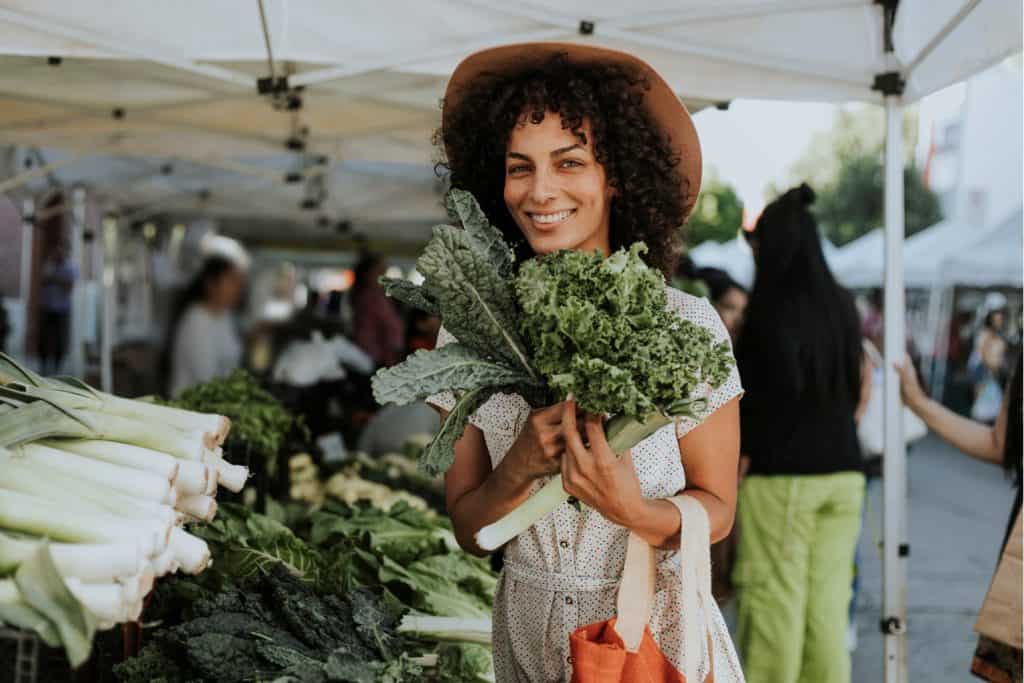‘Putting up’ fall foods

Integrative Internal Medicine Physician, Farmer, and Food-Lover Dr. Kate Shafto teaches us how to make our fall harvest last throughout the winter.
As summer wanes and signs of fall arrive, my attention turns to how I can honor the bounty of summer’s harvest and preserve it for the winter months ahead.
I did not grow up with this tradition, though I vaguely recall an awareness that some people in rural Tennessee, where I was born, spent time canning, preserving, and “putting up” food for the winter. I have chosen to learn these skills in recent years as a way to align my family’s lifestyle with our values of respect for the earth, reducing food waste (and packaging and food costs), having more connection to our food, and eating as locally as possible for as much of the year as possible.
These skills did not happen overnight and are not a way of life to which everyone can or needs to aspire. However, I find comfort and joy in these mostly simple ways of connecting to the food that sustains us and recovering traditional wisdom from the generations of humans before us. I also see these practices as a way to recover some autonomy, sovereignty, and control over the food we consume, amidst a global food system that has intentionally removed the eater from any connection with the producer of our food. This shift away from a more personal and known source of food has had disastrous and far-reaching consequences for our health and the health of the planet. (For more on this topic, the work of Wendell Berry is an essential study and has informed my understanding of the food system in which we now live and eat).
By preserving or storing food that is locally available right now at farmer’s markets, we take advantage of the nourishment of this food, support local growers, reduce food waste, improve our health, reduce the environmental impact of food transport, and reclaim a connection with more traditional food ways.
These are some of the most simple and basic ways one could “put up” some of summer’s bounty for the winter months to come…
1. Freeze greens. Greens provide critical vitamins and minerals, and when cooked gently (in a sauté, soup, or stew), the fat or oil and the cooking process improve vitamin absorption and ease of digestion. Blanching and freezing is a way to briefly cook the greens, lock in nutrients, and save them for use in soups/stews or stir-fry/bowls throughout the winter. This works well with deep
green leafy vegetables like collard greens, kale, Swiss chard, mustard greens, and beet greens. Blanching and freezing greens:
Supplies:
- Bags for freezing, tongs or slotted spoon (or a pasta utensil), cooling rack, saucepan, cutting board and knife.
Prep:
- Set up a station near your stovetop including a cutting board, large bowl for chopped, raw greens, and a cooling rack with a towel underneath to drain and dry blanched greens.
Process:
- Bring a saucepan of water to boil on the stovetop
- Meanwhile, rinse the fresh greens if desired, and shake off excess water.
- Remove the leaves from the stems (for collards and kale).
- Chop the leaves (and stems for the other greens).
- Once the water is boiling, put a handful of chopped greens into the boiling water and let sit for 20-30 seconds, or until they turn a brighter shade of green.
- Remove and spread out on the cooling rack to drip dry and cool.
- Put in bags for freezing.
- Label with the type of greens and date.
2. Make pesto. Pesto freezes well and can be made from herbs as well as carrot tops, beet greens, and other greens. Nuts/seeds, garlic, and olive oil are the other main ingredients.
3. Dry herbs. Herbs like basil, mint, thyme, oregano, catnip, and tulsi (holy basil), all dry well. You could purchase herbs from a farmers market, grocery or grow them in a pot. To dry: Gather like herbs in a bunch, wrap with a rubber band, put upside down in a paper bag, and hang to dry. Poke 5-10 holes in the paper bag to allow for air circulation. Once dry (often about 1 week), remove the dried leaves from the stems and store them in a jar.
4. Freeze herbs. Chopped chives freeze well and can go in a bag and take up very little space in the freezer. Putting chopped herbs in ice cube trays with olive oil is also a way to preserve them for a future sauté, stew or stir-fry. Herbs that do well in this method would be the softer stemmed ones like chives, cilantro, or basil, and lemon balm (leaves only).
5. Pickle things. Quick pickling is a simple, time-honored way to preserve food with vinegar. Pickling can be done with cucumbers, green beans, onions, and firm vegetables. There are many recipes for quick pickling online and they can be easily adjusted to tastes/preferences and quantity.
6. Store storage crops. Onions, potatoes, cabbage, carrots and beets, apples, garlic…these are all storage crops and can be purchased from farmer’s markets when they are abundant (like now!) and stored in a cool place throughout the winter, potentially without refrigeration in some cases. Ask a farmer what they recommend for specific storage conditions.
Interested in more stories from Integrative Health? Sign up for their quarterly newsletter, by clicking on ‘subscribe’.
 Kate Shafto, MD, practices at the Clinic & Specialty Center in the Pain Management Clinic. Dr. Shafto is board-certified in Internal Medicine, Pediatrics and Integrative Medicine. She practiced Hospital Medicine for both adult and pediatric patients for six years before doing a fellowship in integrative medicine and developing an outpatient practice focused on chronic disease management through lifestyle interventions. She is passionate about optimizing the power of lifestyle as medicine. She has developed a course called Food Matters which provides experiential nutrition and food-skills education for graduate-level health professional students and practicing providers at the University of Minnesota’s Center for Spirituality and Healing. She holds group medical visits on holistic healing for headache pain.
Kate Shafto, MD, practices at the Clinic & Specialty Center in the Pain Management Clinic. Dr. Shafto is board-certified in Internal Medicine, Pediatrics and Integrative Medicine. She practiced Hospital Medicine for both adult and pediatric patients for six years before doing a fellowship in integrative medicine and developing an outpatient practice focused on chronic disease management through lifestyle interventions. She is passionate about optimizing the power of lifestyle as medicine. She has developed a course called Food Matters which provides experiential nutrition and food-skills education for graduate-level health professional students and practicing providers at the University of Minnesota’s Center for Spirituality and Healing. She holds group medical visits on holistic healing for headache pain.

